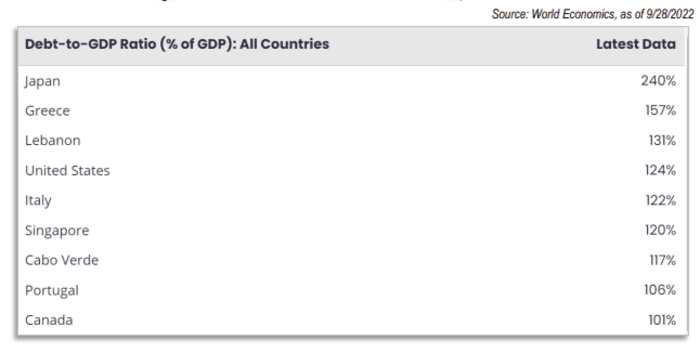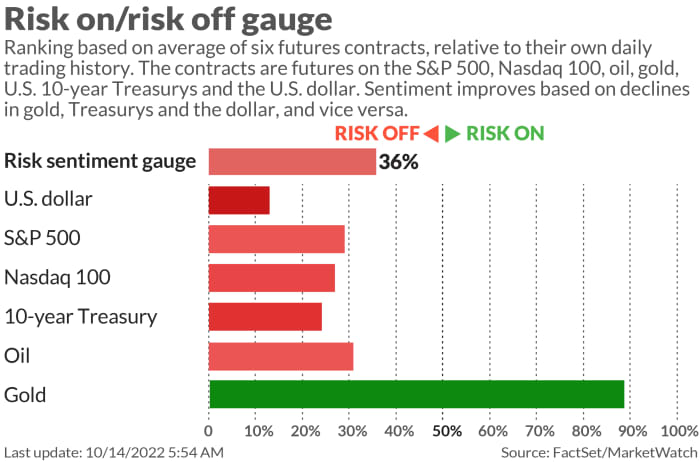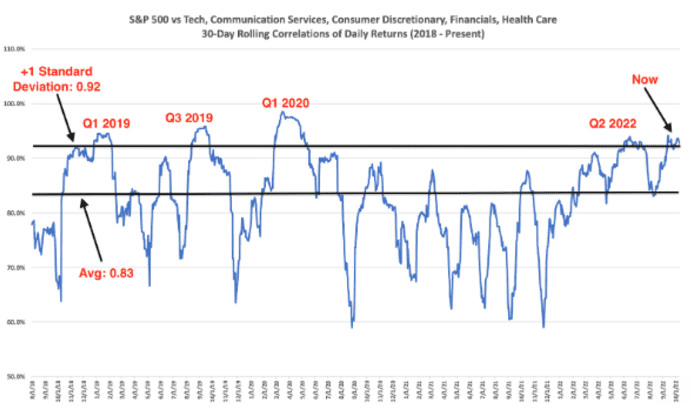Markets are struggling to extend the previous session’s impressive rebound. There may be a number of reasons why a worse-than-expected inflation report was eventually shrugged off with such vigor on Thursday.
Bored with the bad: traders eventually become inured, like with the pandemic, to rotten news on a particular topic. Oversold conditions in stocks: at the low early on Thursday the S&P 500 was down nearly 27% for the year, and buyers pounced near the nice round figure of 3,500.
Another factor may have been at play. U.K. government bonds were rallying ahead of Friday’s deadline for Bank of England intervention and amid expectations the government will backtrack further on its debt-funded tax-cutting budget.
Those calmer conditions in U.K. gilts are important. The selloff there has reverberated across markets, showing that the bond vigilantes are back with a bang. Debt now matters. They really don’t like it if governments borrow lots of money when interest rates are rising sharply.
It’s a sentiment shared by David Iben, the founder and chief investment officer of Kopernik Global Investors. He believes that traders should take note that it’s not just the heavily-indebted PIGS of Europe — Portugal, Italy, Greece and Spain — that face funding problems, but also larger countries like the U.S. and Japan.

Source: Kopernik Global Investors
And he’s come up with a new acronym to make his point, starting by the substitution of Singapore for Spain, which has dropped out of the top ten debtors.
“We recommend that the out-of-date PIGS acronym be replaced with the more up to date and relevant moniker– JIG’S UP. This reflects the countries with the most alarming levels of debt in comparison to the size of their economies: Japan, Italy, Greece, Singapore, United States, and Portugal,” Iben writes in a new note.
What does this mean for investors?
“It seems that the jig’s up for the central bank-led four decades of lower interest rates and the ‘implied put option’ against market losses. As such, it seems clear to us that sovereign bonds of the JIG’S UP countries should be avoided. This applies to most stocks as well. Stagflation is here,” says Iben.
“Debt must be paid off through hard work and austerity (rare in democracies) or defaulted on, either outright or through devaluation. Democracies choose the latter. Debt levels of 124% of GDP are ominous for the U.S.. The dollar may stay ‘strong’ versus the yen, but very likely will fall hard versus hard assets,” he adds.
Consequently, TINA (there is no alternative) now better applies to hard assets and stores of value rather than equity indices, according to Iben, and he recommends agricultural land, gold, energy and other commodities – a trend that should help stocks in resource-rich economies.
“We suggest that the recent correction in these very ‘stores of value’ is a godsend. We are eagerly repurchasing many of the energy stocks that we’d sold over the past year. Precious metals stocks are back to our maximum 25% of the portfolio. Emerging markets have garnered an increasingly larger share as well,” says Iben.
He concludes with this warning to be stoic: “While the meme stock players may have their ‘diamond hands’, hard asset investors may need ‘nerves of steel’. Revisit charts from the 1970s [when the scenario previously occurred]. The gains are quick and pronounced. Don’t be shaken out at inopportune times.”
Markets

Stocks looked like adding to the previous session’s strong rally, with the S&P 500 future
ES00,
up 0.3% to 3695. The dollar index
DXY,
was up 0.4% to 112.86 even as 10-year Treasury yields
TMUBMUSD10Y,
fell 5 basis points to 3.898%. U.S. crude futures
CL.1,
eased 1% to $88.18 a barrel as concerns about a global slowdown lingered. Gold
GC00,
fell 0.9% to $1,662 an ounce and Bitcoin
BTCUSD,
added 1.5% to $19,658.
The buzz
The U.S. third quarter earnings season gets into full swing on Friday. UnitedHealth
UNH,
beat forecasts and so did JP Morgan
JPM,
with both companies’ share prices rising in response.
Wells Fargo
WFC,
revenues were better than expected, too, though profits were hit by charges. Still, the report was well-received and the stock rose nearly 3%.
Morgan Stanley
MS,
and Citigroup
C,
were not treated so kindly, with both companies’ stock softer on mixed reports.
A decent batch of economic data are on the slate for Friday, too. September U.S. retail sales are due at 8:30 a.m., alongside the import price index. The University of Michigan sentiment index and 5-year inflation expectations survey for October are due at 10 a.m. Business inventories for Augusts are also released at 10 a.m. All times Eastern.
Here comes yet more Fedspeak. Kansas City Fed President Esther George takes the mic at 10 a.m. and Fed governor Lisa Cook will make comments at 10:30 a.m.
Shares in Beyond Meat
BYND,
fell more than 9% in premarket action after the vegetarian food-maker warned on revenue and announced job cuts.
30-year gilt yields
TMBMKGB-30Y,
which this week moved above 5% at the height of a selling frenzy, are trading back down around 4.27% as hopes build the U.K. government may drop more of its controversial tax-cutting budget amid reports the finance minister Kwasi Kwarteng would be sacked.
Shares in embattled bank Credit Suisse
CSGN,
were hovering just above record lows following reports it was in talks to sell its securitized products unit to Mizuho Financial Group
8411,
Best of the web
How Walmart convinced its critics it can sell more stuff and save the world.
The judge holding Musk to account.
China and the West are in a race to foster innovation.
The chart
When equity markets are nervous about macro issues – like recession, pandemics, geopolitics – the correlations between stocks tend to rise as everything is sold in near equal measure. The chart below from Nicholas Colas, co-founder of DataTrek Research, shows the 30-day daily price return correlation between the S&P 500’s five biggest sectors; Tech, healthcare, financials, communication services and consumer discretionary. It’s currently about one standard deviation above the long run average.
“The good news is that markets eventually price in whatever macro risk is forcing correlations to cluster, and that is the bottom. This takes time, as the chart illustrates. But it always happens and, afterwards, stocks can rally again,” says Colas.

Source: DataTrek.
Top tickers
Here were the most active stock-market tickers on MarketWatch as of 6 a.m. Eastern.
| Ticker | Security name |
| TSLA, | Tesla |
| GME, | GameStop |
| AMC, | AMC Entertainment |
| AAPL, | Apple |
| NIO, | NIO |
| BBBY, | Bed Bath & Beyond |
| APE, | AMC Entertainment preferred |
| INFY, | Infosys |
| AMZN, | Amazon.com |
| DWAC, | Digital World Acquisition Corp. |
Random reads
1,100 year-old Royal Mint sees record profits as turmoil boosts gold demand.
More than 5 billion phones to be dumped.
Need to Know starts early and is updated until the opening bell, but sign up here to get it delivered once to your email box. The emailed version will be sent out at about 7:30 a.m. Eastern.
Listen to the Best New Ideas in Money podcast with MarketWatch reporter Charles Passy and economist Stephanie Kelton
Source: https://www.marketwatch.com/story/the-debt-vigilantes-are-back-and-even-u-s-assets-will-struggle-heres-what-to-buy-instead-says-one-veteran-fund-manager-11665743611?siteid=yhoof2&yptr=yahoo
